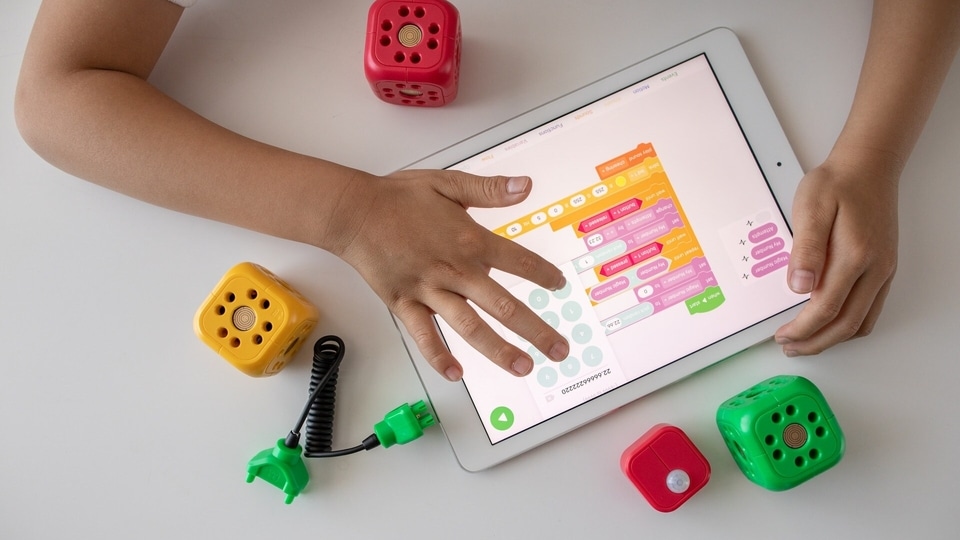Revolutionizing language learning: The power of EdTech
By leveraging innovative tools and techniques, EdTech is revolutionizing the language learning landscape, making it more accessible, engaging, and effective than ever before.






 View all Images
View all ImagesHow many times have we said, “I want to learn another language” and then never get around to it? Especially in today's interconnected world, communicating in multiple languages is becoming increasingly vital. The urban Indian today is curious. According to a recent survey by language learning app Duolingo, half of urban Indians have learned a new language in the last one-to-two years.
Technology has helped in this regard. EdTech is playing a crucial role in transforming the way we approach language learning and, in particular, how it enhances speech and the development of new languages. By leveraging innovative tools and techniques, EdTech is revolutionizing the language learning landscape, making it more accessible, engaging, and effective than ever before.
Urban Indians are taking advantage of this. According to the research, four in five urban Indians use digital tools like language learning apps and online courses to ace a new language at least once a week.
How is EdTech helping learners master languages?
“EdTech is an umbrella term that includes many hardware and software systems and resources that facilitate learning in many different ways,” says Dan Berges, MD and Founder of Berges Institute, one of the online Spanish language learning platforms expanding in the United States, Europe, and India.
“Educational companies and organizations of all sizes around the world have now the option of building their own tech-based learning environments, outsourcing everything, or combining in-house-developed and third-party solutions,” he adds.
Interactive Language Learning Platforms
One of the pivotal aspects of EdTech is interactive language learning platforms that empower learners to take charge of their linguistic journey. These platforms make use of cutting-edge speech recognition technology, enabling students to practice speaking in the target language while receiving instant feedback.
“While traditional video recording and video playback technologies allowed remote, asynchronous learning in the past, modern cloud infrastructure and global networks allow real-time (i.e. synchronous), bidirectional communication between teachers and students, which is necessary in language learning,” says Berges.
Today, learners can engage in interactive conversations and simulate real-life scenarios without leaving the comfort of their homes.
“Real-time video compression and packet prioritization algorithms have allowed language teachers and students to communicate with each other over the network seamlessly, even when using slower internet technologies like DSL or satellite,” he says.
Gamification for Enhanced Motivation
EdTech realizes the role learner motivation plays in language acquisition. Just staring at an app all day isn't the idea behind EdTech language learning. To address this, many language learning apps and platforms employ gamification techniques. A few examples include Duolingo, Rosetta Stone, and Memrise. In fact, it was Duolingo that introduced mixing gamification with language learning, sparking a wave of gamified language learning platforms and applications.
By incorporating game-like elements such as rewards, badges, and level-ups, learners are incentivized to progress in their language studies. Gamification fosters healthy competition among learners and instils a sense of achievement, keeping them engaged throughout their language learning journey.
Virtual Reality for Authentic Experiences
Imagine walking through the bustling streets of Paris, conversing with locals in French, or exploring the picturesque landscapes of Japan while practicing Japanese. That's what EdTech makes possible with the use of Virtual Reality (VR). Some apps that provide a VR-powered language learning experience include Immerse, Noun Town, ImmerseMe, Language Lab, and Mondly.
VR simulations provide learners with authentic environments to practice their speaking skills and build confidence in real-life situations. This technology breaks down barriers and allows learners to immerse themselves in the cultural context of the language they are learning.
Augmented Reality (AR) for Language Reinforcement
EdTech's integration of Augmented Reality (AR) into language learning presents exciting possibilities. Just aim your smartphone at your surroundings and see the words you learn in front of you. Apps like Mondly AR and HelloTalk are known to use this technology, providing an interactive and visible virtual assistant.
“The biggest benefit of gamification, AR and VR, is that they can dramatically improve students' engagement, which results in more hours of exposure to the target language, smoothing the learning curve,” says Berges.
AR applications can overlay language labels, translations, and interactive elements onto the physical world, enhancing vocabulary retention and promoting language use in real-world contexts. Apps like WordLens, Quiver, and AR Translator help learners by translating written text.
AI Personalization
No matter the app, Artificial Intelligence is there making things faster and easier. EdTech harnesses the power of AI to personalize language learning experiences.
AI-driven platforms analyze individual learners' strengths and weaknesses, tailoring lesson plans and exercises accordingly. This personalized approach ensures that learners receive targeted support and practice in areas that need improvement, ultimately accelerating their language proficiency.
The global education market share of AI is projected to expand at a CAGR of a whopping 36% from 2022 to 2030, according to a report. Language learning is an area where AI is expected to have the greatest impact.
Maya Valencia Goodall, MEd, MA, a senior director of emergent bilingual curriculum at Lexia Learning says, AI can promote equity for emergent bilingual students in two ways, “1) by creating powerful, individualized learning pathways and 2) by quickly producing data that has historically been absent or extremely delayed.”
Not everyone says AI is there yet though. Berges says, “It is not clear yet, as large language models (LLMs) like ChatGPT, Bard or Llama are fairly new. So far, we know they can be really useful for casual conversation practice, as they allow a language learner to chat with a human-like entity that speaks the target language perfectly, and on top of that, can be very engaging. For intermediate and advanced language students talking to a good AI chatbot can be very useful.”
Community-Based Learning
While some learners like to learn in isolation, others seek groups, an area that EdTech takes into account. EdTech has facilitated community-based learning, allowing language learners to connect with native speakers and other learners around the world. Apps like HelloTalk, Tandem, HiNative, Meetup, Idyoma, and Speaky allow the user to exchange language abilities through communication.
Through language exchange platforms and online communities, learners can practice speaking, receive guidance, and share cultural insights with peers from diverse linguistic backgrounds. These interactions foster mutual understanding and enrich the language learning experience.
Content delivery systems & database applications
Content delivery systems and database applications can greatly improve classroom-based education, both in language teaching and other disciplines. These mostly cloud-based systems can improve both teachers' and students' efficiency, increase engagement and motivation, facilitate teamwork, and provide record-keeping functionality that lets educators store and analyze performance data in a metric-based, structured way.
“Third party, browser-based database management software solutions have made educators more efficient, specifically in tasks like curriculum management, assessment, evaluation, and content delivery,” says Berges.
STT & TTS
Speech-to-text (STT) technologies and text-to-speech (TTS) technologies have allowed EdTech startups to develop tools that can automatically correct students' pronunciation and allow them to listen to words in their target language pronounced in a native accent on demand, respectively.
However, Berges says regarding speaking practice, TTS and SST models are not very good yet.
“While a written conversation with an LLM can be engaging and feel ‘natural,' connecting LLMs to TTS/SST models has not yielded great results so far, as 1) the resulting system doesn't tend to sound very ‘human' when it speaks, and 2) there is still some awkward latency happening when the system has to process voice input,” he explains.
Breaking Language Barriers with EdTech
In the digital age, a learner just has to wish to learn a new language and EdTech provides the means like a genie. EdTech is transforming language learning, unleashing its full potential to enhance speech and foster the development of new languages. From interactive platforms and gamification techniques to VR simulations and AI-driven personalization, educational technology offers a vast array of innovative tools that cater to diverse learners.
Apart from the above, there are other technologies too that are constantly upping the EdTech game for language learners, says Berges, “Even though AI and VR tend to draw more attention than other technologies, modern cloud infrastructure and global internet networks have had the biggest impact. Those two technologies alone have allowed educators to scale their reach from the maximum number of students who can fit in a classroom to anyone who has a device with a screen and an internet connection anywhere in the world.”
Evolving EdTech promises to open new horizons, breaking language barriers and forging connections that unite the global community through the power of speech.
Catch all the Latest Tech News, Mobile News, Laptop News, Gaming news, Wearables News , How To News, also keep up with us on Whatsapp channel,Twitter, Facebook, Google News, and Instagram. For our latest videos, subscribe to our YouTube channel.

























